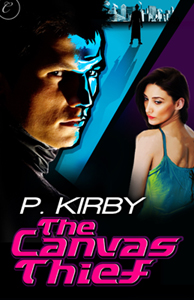 “Well. That was a hot mess,” says my husband as The Lone Ranger‘s credits crawl up a scene of Monument Valley, a dispirited Tonto limping off into the sunset.
“Well. That was a hot mess,” says my husband as The Lone Ranger‘s credits crawl up a scene of Monument Valley, a dispirited Tonto limping off into the sunset.
The statement is significant, in that my spouse, unlike me, is generally kind to movies. Me, I love excoriating a bad movie, detailing its sins against plot, characterization, cinematography, etc. But the hubs usually just shrugs and says, “It wasn’t good, but there were some funny parts.”
To say The Lone Ranger is a hot mess is to disparage steaming piles of poop everywhere. After all, certain types of excrement make good fertilizer. Not so, The Lone Ranger.
Possibly taking a page from The Princess Bride, the story alternates between the actual adventures of the masked man and native sidekick, and a conversation between a cute lad and an elderly storyteller. Only instead of Fred Savage and Peter Falk’s cute chemistry, we have a young boy trying to illicit a response from a sullen, elderly Tonto, played by Johnny Depp.
Many critics have complained that Depp’s Tonto is a retread of Captain Jack Sparrow, but with worse headgear and more eyeliner. My feeling is that only in those few moments when Tonto emits au de Jack, is Tonto even remotely alive. I’m tempted to lay the blame entirely on the director, Gore Verbinsky, but taking into account Depp’s experience as an actor, it’s difficult to understand how the two couldn’t come up with a character who was dynamic and possessing Jack Sparrow’s psychotic joi de vive, without actually being Jack.
The problem isn’t when Depp is too pirately, but rather when he is the dull-eyed, wooden, cigar store Indian of the majority of the film. It’s like whenever Depp started to show any hint of life, the director told him to tone it down, and all the actor had left was moribund misery.
The meat of the story (think hamburger left in the sun for a week) is the meet cute between The Lone Ranger and his sage Native American minion Tonto. (A name which always makes Spanish speakers giggle.) Tonto and notorious criminal Butch Cavendish (William Fitchner, the only actor who seems to be enjoying himself in this stinker) are on a train, in police custody and bound for a hangin’. Cavendish, who obviously has some inside help, slips his chains, kills the guards and is about to escape when John Reid (Armie Hammer) arrives in the nick of time and stops him. Well, almost. See Reid is the district attorney and the ultimate Dudley Do-Right. Instead of just plugging Cavendish with some well-place lead, he monologues about truth, justice and honor, blah-blah. Cavendish, of course, kicks his ass, and escapes.
This, of course, sets the pattern for the rest of the film, with Reid opting for the bureaucratic path to justice, which invariably backfires and gets more people killed. Tonto, meanwhile, follows along, driven by his own need for vengeance against Cavendish, and urges Reid, a.k.a., The Lone Ranger, to just effing kill someone. This is the extent of their partnership–Reid makes like the Great White Moron and Tonto rolls his eyes. Hardly the stuff that great friendships are made of.
The Lone Ranger and Tonto’s bromance-that-wasn’t is set against an uneven tonal backdrop that careens between serious message movie (progress, Manifest Destiny=bad; Indians= noble and good) and campy shoot-em-up. One wonders if the intent was create a film with a Quentin Tarantino vibe, a bloody cheese fest that was simultaneously lampooning bloody cheese fests. Except the violence in The Lone Ranger is tame, even the sequence where Cavendish cuts out a man’s heart is sanitized and tidy; and the action sequences too much old timey Saturday matinee. The scenes where the tone turns serious feel like excerpts from another movie altogether. For example, there’s the backstory on how Tonto got his feathered headgear and case of crazy brain. The sequence is designed, one assumes, to inform the audience that Tonto is a sad, sad clown, but it arrives in the story like a ton of bricks.
Eventually, for no particular reason, other than the movie being over budget, The Lone Ranger decides to get his hero on, and in yet another ridiculous train sequence (there are many), brings the killing to the baddies. Notable in this sequence is the fakest fake horse in the history of ever. I mean, at this point, the cinematographers were too lazy to even attempt to hide the fact that Silver, in the close-up riding sequences, is a big, fat, stuffed horse.
(Speaking of horse, however, the flesh and blood equine(s) who plays Silver is the best actor in the movie.)
As a fan of movies with swords, guns, space, car chases and numerous explosion, I’m adept at ignoring a high percentage of cinematic sins and crimes against physics. What dooms The Lone Ranger, however, is the relationship, or lack thereof, between the two central characters. Had Depp and Hammer possessed the delicious zing of Robert Downey Jr. and Jude Law in Sherlock Holmes, The Lone Ranger‘s other weakness could have been easily ignored. Instead, Tonto and his white protégé never progress beyond mild antipathy.
Maybe the sequel (if there is one) should simply be about Silver.


